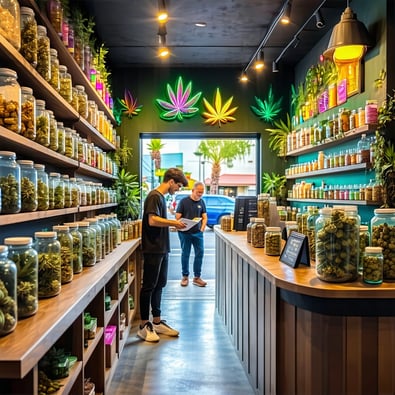Supply Shortages Challenge Minnesota Cannabis Dispensaries as Market Slowly Launches
While legalization opened new doors for entrepreneurs, Minnesota cannabis dispensaries are facing an unexpected hurdle — a lack of product. Despite dozens of licenses issued, most stores can’t yet stock their shelves with adult-use cannabis due to slow cultivation growth and limited supply chain infrastructure.
Over two years after legalization, nearly 60 businesses have received approval to operate, with more than 1,400 others awaiting clearance. Yet, only two cultivators have licenses to grow cannabis for Minnesota cannabis dispensaries, and their plants aren’t mature enough to harvest. As a result, many retailers, including In-Dispensary in downtown Minneapolis, are stuck selling only hemp-derived THC edibles.
Owner Mark Eide says his store’s sales have plummeted because of the delay. “We should be handling about 80 customers per day,” he told WCCO, “but instead, we’re serving two to four.” His story mirrors that of many others trying to keep their doors open as Minnesota cannabis dispensaries struggle to obtain supply.
The Office of Cannabis Management’s director, Eric Taubel, acknowledges that this rollout stage is the hardest. He expects supply to improve once more cultivators and tribal compacts come online. Minnesota currently has agreements with three tribal nations Prairie Island Indian Community, White Earth Nation, and the Mille Lacs Band of Ojibwe — allowing them to operate and sell cannabis to other businesses. These tribal partnerships could provide much-needed relief for Minnesota cannabis dispensaries waiting for wholesale access.
“People are incredibly frustrated,” she said. “Businesses are going to close before they even get started because this is such an expensive industry.” Many Minnesota cannabis dispensaries face high startup costs, licensing fees, and rent payments — all while waiting for inventory.
Adding to the strain, the state has yet to approve transporter licenses, and only two testing labs are operational. Without transporters, even when products become available, Minnesota cannabis dispensaries may face logistical barriers moving cannabis from growers to retailers.
Taubel estimates the state needs roughly 1.5 million square feet of cannabis canopy to meet consumer demand — but current cultivation covers only a fraction of that. He remains confident that as more businesses finalize their paperwork and medical cannabis companies expand production, the situation will stabilize.
For now, Minnesota cannabis dispensaries sit in limbo: licensed, ready, and waiting. The foundation for a thriving legal market is in place, but without enough product to sell, the state’s ambitious cannabis rollout still faces its toughest growing pains.





